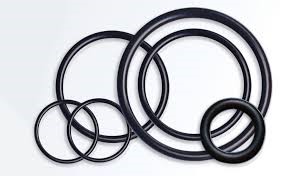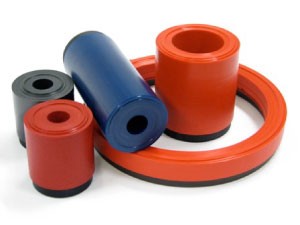Ideally, seal materials have high strength and resiliency, and remain unaffected by thermal or chemical environments. However, there is no single material that offers adequate levels of these characteristics for all downhole applications. Effective sealing in downhole environments often requires a combination of materials to form a seal system. Several sets of identical seal systems can be combined to create a seal stack with redundant seals. Choosing the optimum seal stack requires knowledge of the application and downhole conditions.
Polymeric materials are composed of large molecules called giant, string or chain molecules. Depending on the composition and the structure of the molecules, they can be divided into
- Elastomers
- Thermoplastics

Elastomers are materials that can be highly expanded by exerting relatively little power. Because of their structure, elastomers have a high retractility, which means that the remaining deformation is very small. Basically there are two main groups of elastomers: chemically crosslinked and thermoplastic ones.
Chemically crosslinked (vulcanized) elastomers or rubber materials are polymers which are formed by crosslinking the macromolecules with various vulcanization additives. Due to these chemical bonds they do not melt and they begin to decompose at high temperatures. In addition elastomers swell more or less intensively, depending on different media, and do not dissolve.
Elastomer types are used in oil/gas wells are:
Nitrile Rubbers such as:
- Acrylnitril Butadien Rubber (NBR)
- Hydro Acrylnitril Butadien Rubber (HNBR)
Fluor elastomers such as:
- General Fluoroelastomers (FKM / FPM)
- Perfluoroelastomers (FFKM)
- Tetrafluoro Ethylene/Propylene Rubbers (FEPM)

Thermoplastic elastomers have the significant properties of elastomers over a wide temperature range, but they are physically and not chemically cross-linked. Therefore they can be melted at high temperatures and can be processed with the traditional thermoplastic processing techniques. Thermoplastic elastomers are soluble; generally they swell less than their chemically cross-linked equivalents.
Types:
- Thermoplastic Polyurethanes (TPU)
Thermoplastics are high polymers that are not cross-linked and that can be permanently deformed under the action of pressure and temperature; they possess soft elastic properties to a low degree.
Types:
- Polyaryletherketon (PEEK)
- Polytetrafluorethylen (PTFE+Compounds)



